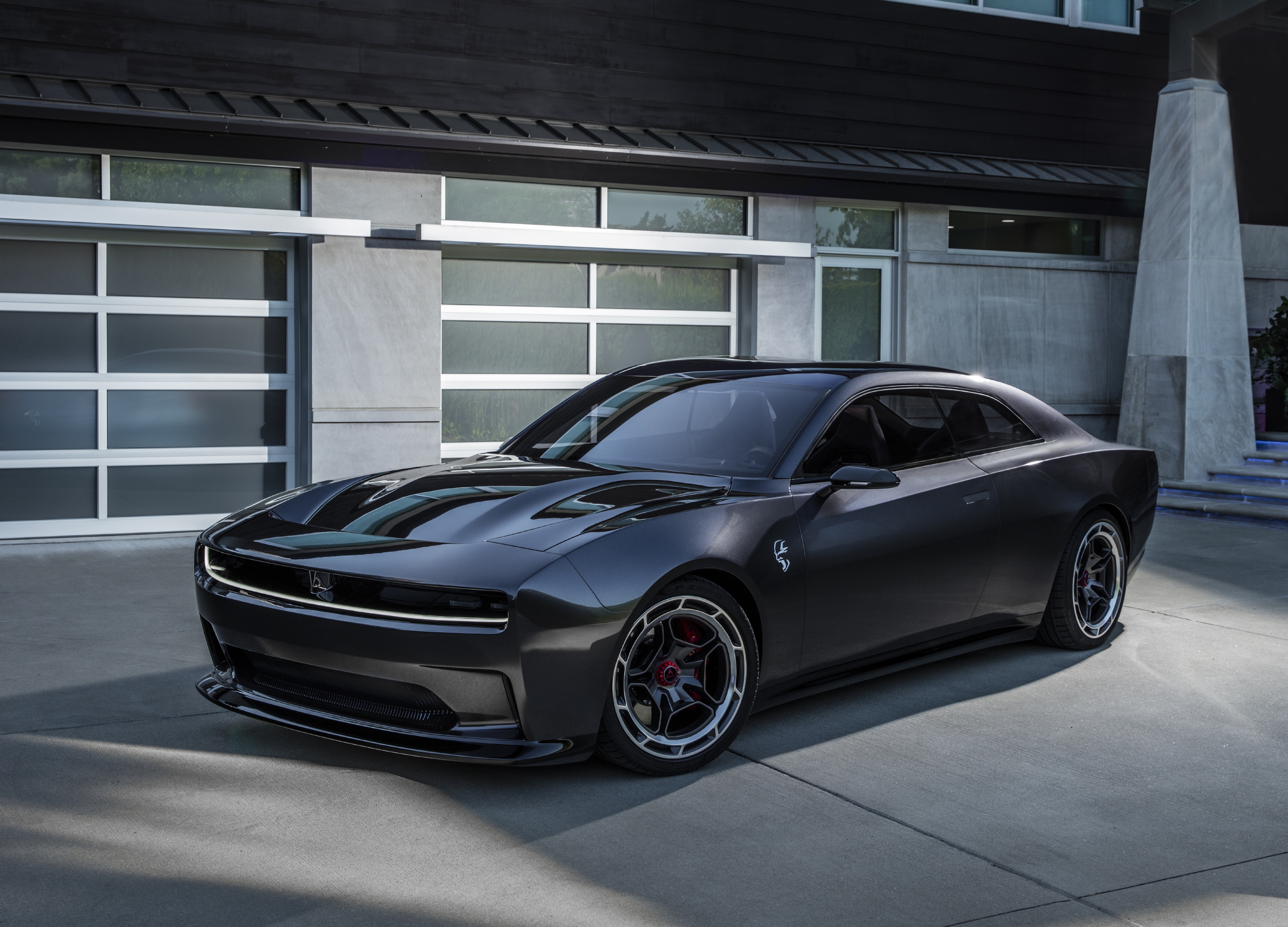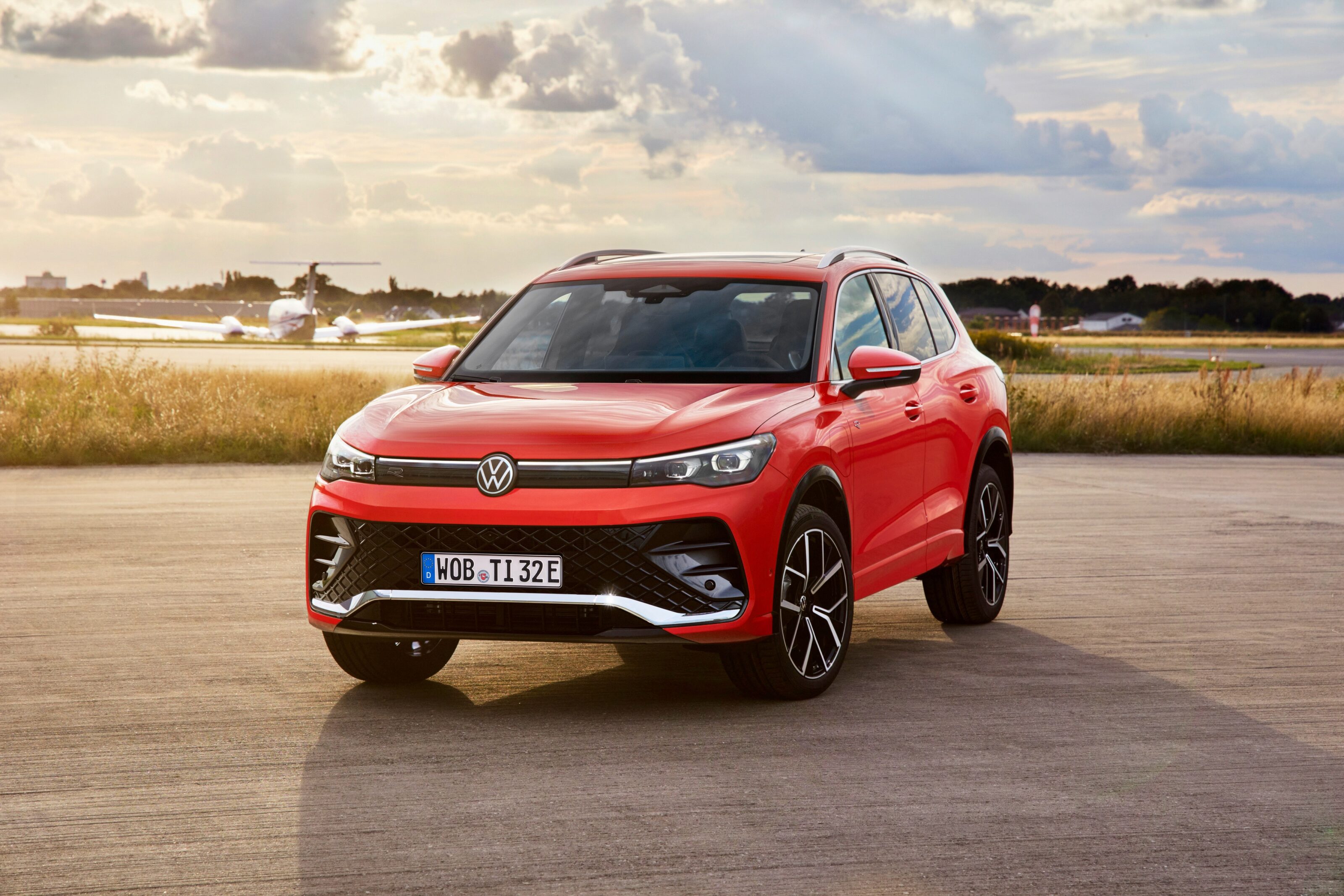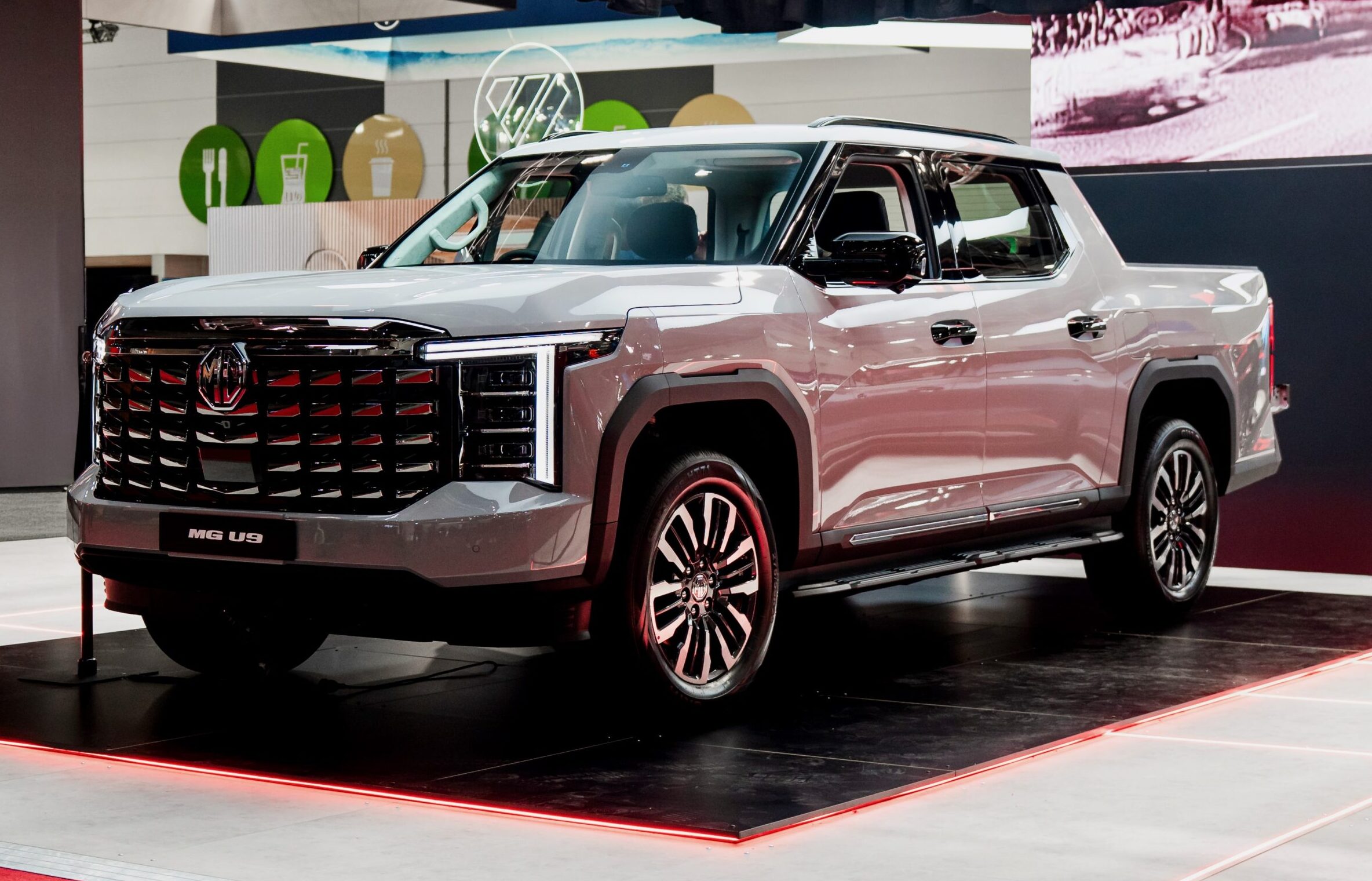UPDATE: Listen to that electrified scream
As promised, the newly revealed Dodge Charger Daytona SRT Banshee concept has a pretty wild wail.
It’s entirely synthesised of course, but it migh be the sort of thing that wins muscle car fans over to the ‘dark side’ of electrification.
What do you think? Have a look below, tell us in the comments, and get the rest of the story below the vids.
The story to here
August 18: As much as Sergio Marchionne might’ve been at peace with the idea, Dodge isn’t going silently into the impending electric future.
In fact, its new Charger Daytona SRT Banshee electric muscle concept car produces a 126-decibel shriek – as loud as a Hellcat’s 6.2-litre 527kW V8.
For now, the Charger Daytona SRT Banshee concept previews Stellantis’ long-term vision for Dodge as a leading battery-electric car maker.
To that end, this electric ‘muscle car’ is slated for production as soon as 2024, after long serving Challenger and Chargers bow out.
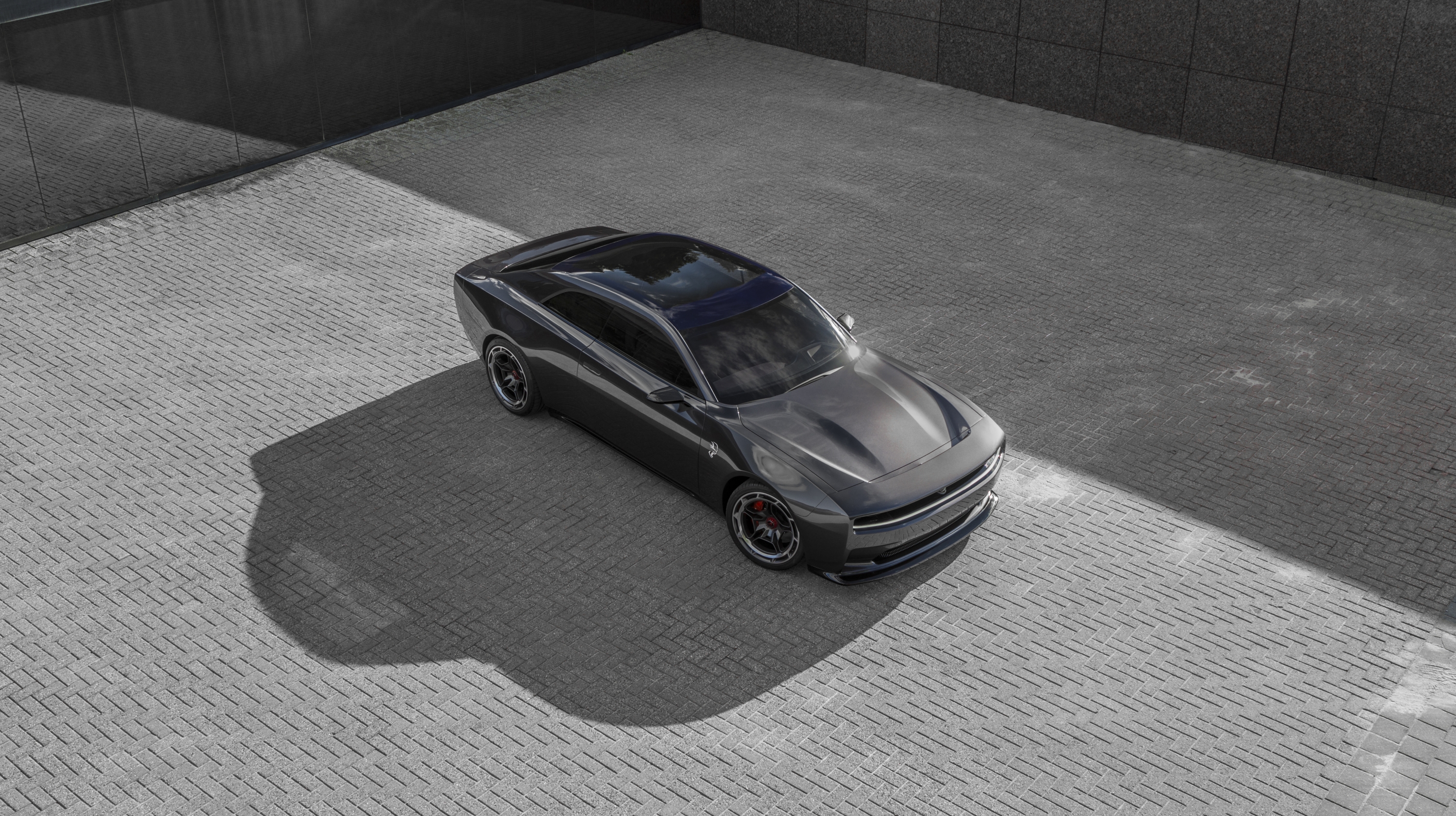
For a time, Dodge seemed to be one of the last bastions of gluttonous combustion performance, but the industry trends and pressure are clear.
Ahead of the Charger Daytona SRT Banshee’s debut, Dodge CEO Tim Kuniskis said, “We can sit at home watching streaming videos and say we’re not going to be a part of it [electrification]”.
“The party is set. The band is booked. This thing is happening, so we said, ‘OK, if it’s going to happen, let’s go there like Dodge. Let’s crash this party and do it differently than everybody else”.
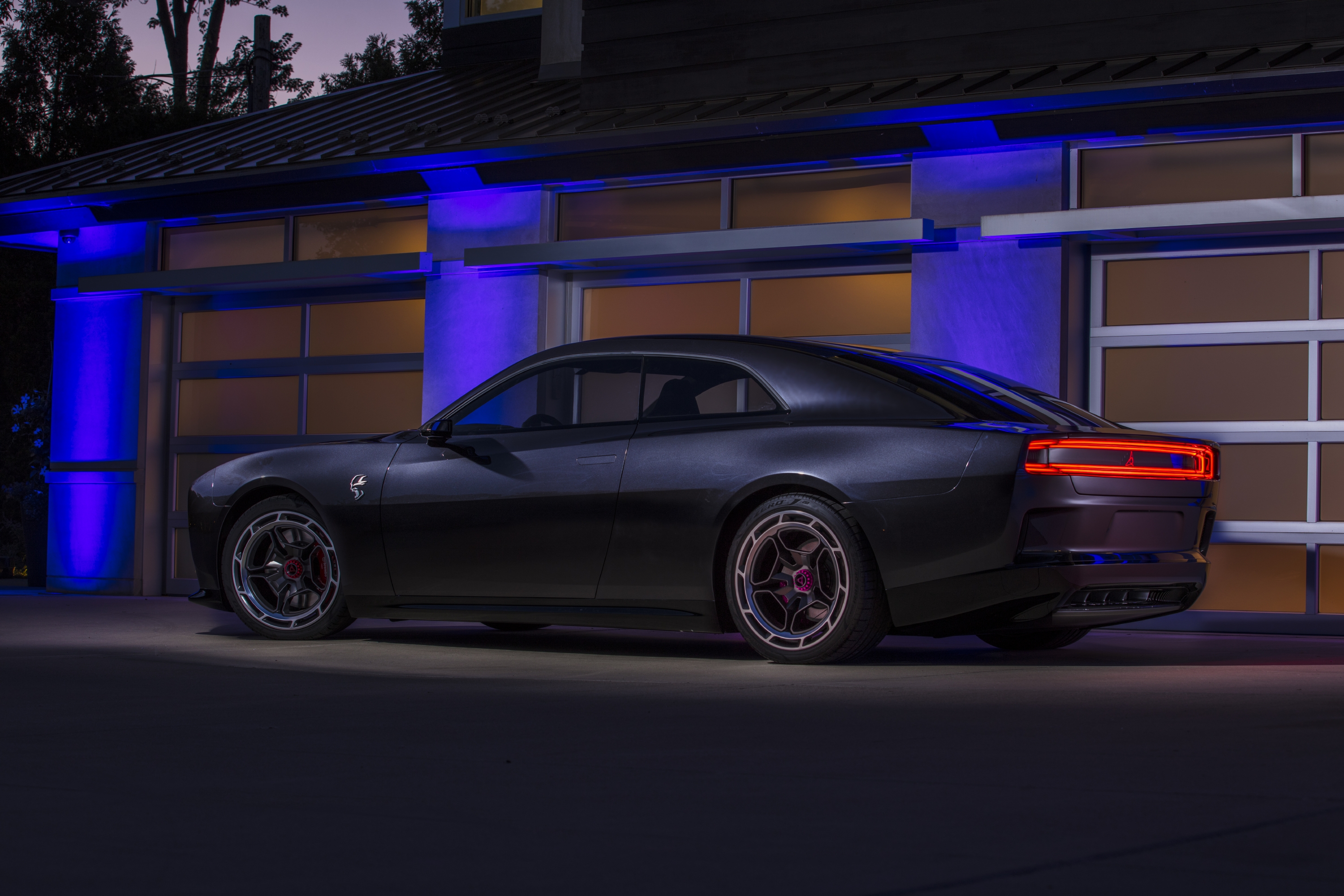
But how? While many manufacturers are leaning into EV’s muted auditory characteristics as boons for NVH improvement, Dodge brand identity is steeped in auditory senses – so it fitted the Charger Daytona SRT Banshee with a shrieking note of its own.
The patented-for-production “Fratzonic” system moves air like a pipe organ through an amplifier and tuning chamber, which Dodge says produces a sinister grumble and a whirring scream at speed as loud as 126-decibels.
Like Porsche’s Taycan and Audi’s e-tron GT sibling, the Dodge Charger Daytona SRT Banshee utilises a multi-speed transmission, comprising a patented ‘eRupt’ multi-speed system with electro-mechanical shifting.
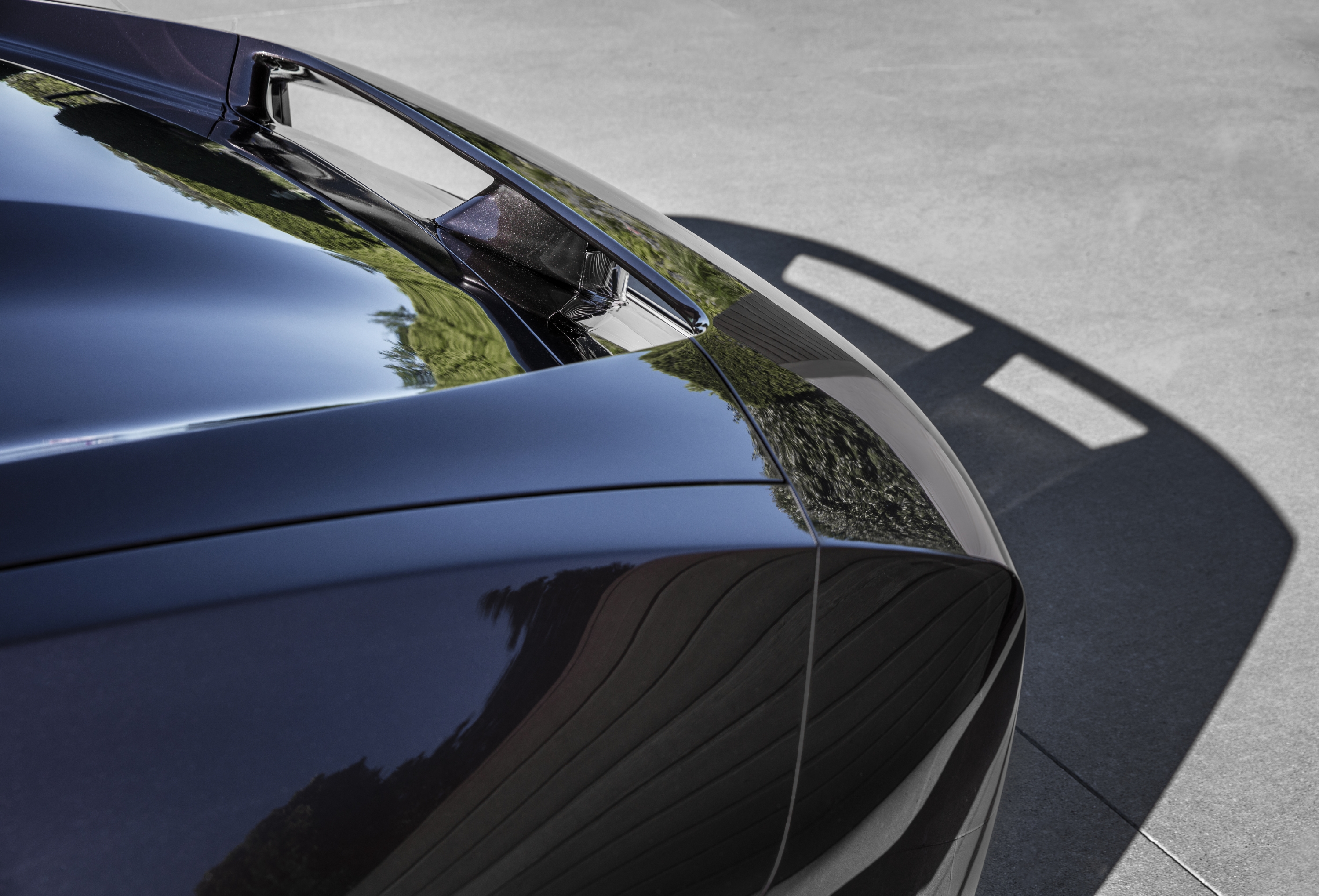
Aerodynamics also play a key factor in ultimate EV efficiency, and saw Dodge dip into the history books, reviving the classic Charger Daytona‘s iconic nose-cone design that saw it banned from NASCAR in the 1970s.
The iconic design provides the ‘Daytona’ tribute in the Banshee’s name, and also provides an approximate 25 per cent improvement in aerodynamics compared to Dodge’s current road cars.
Dodge’s patent-pending ‘R-Wing’ over the front nose was added in honour of Gary Romberg, the rocket scientist who designed the original 1970 Daytona. Carbon-fibre intakes at the front and rear also assist with aerodynamics. In concept form at least, there is no ‘frunk’ storage space.
“It looks like a proper muscle car, aerodynamic like a full BEV, but not a melted jellybean”, jests Kuniskis.
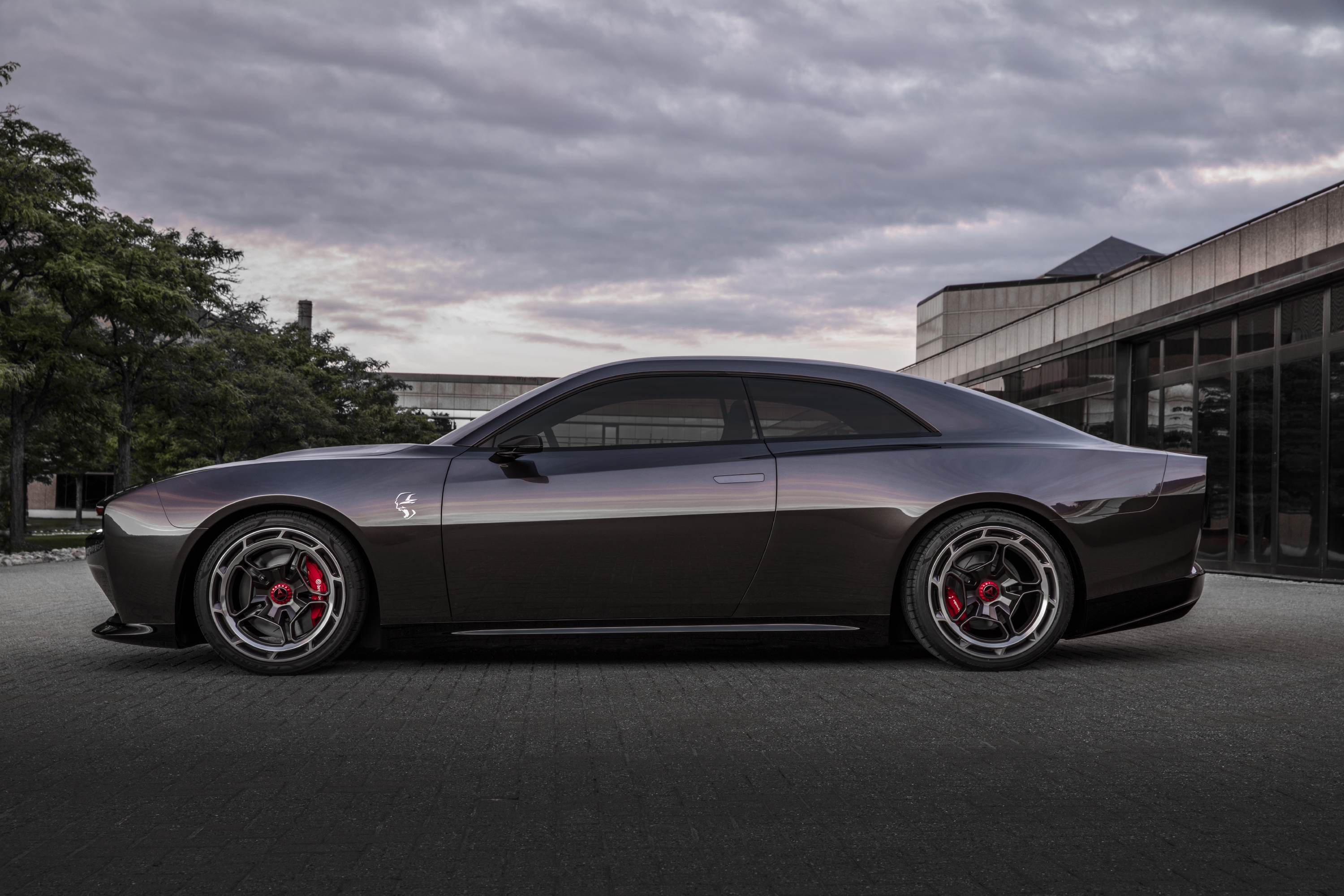
Dodge has yet to publicise any performance figures, with no claims made in regards to driving range or 0-100km/h times, with little information given in regards to its powertrain.
Dodge says, however, that the Charger Daytona SRT Banshee boasts an 800-volt system, with Dodge intending to offer three differing power levels, including a lower 400-volt option.
Dodge’s aftersales parts catalogue, Direct Connection, will provide two further power-up steps for those three model variants, similar to the tuner and stage upgrade kits it has offered for current combustion-powered performance cars.
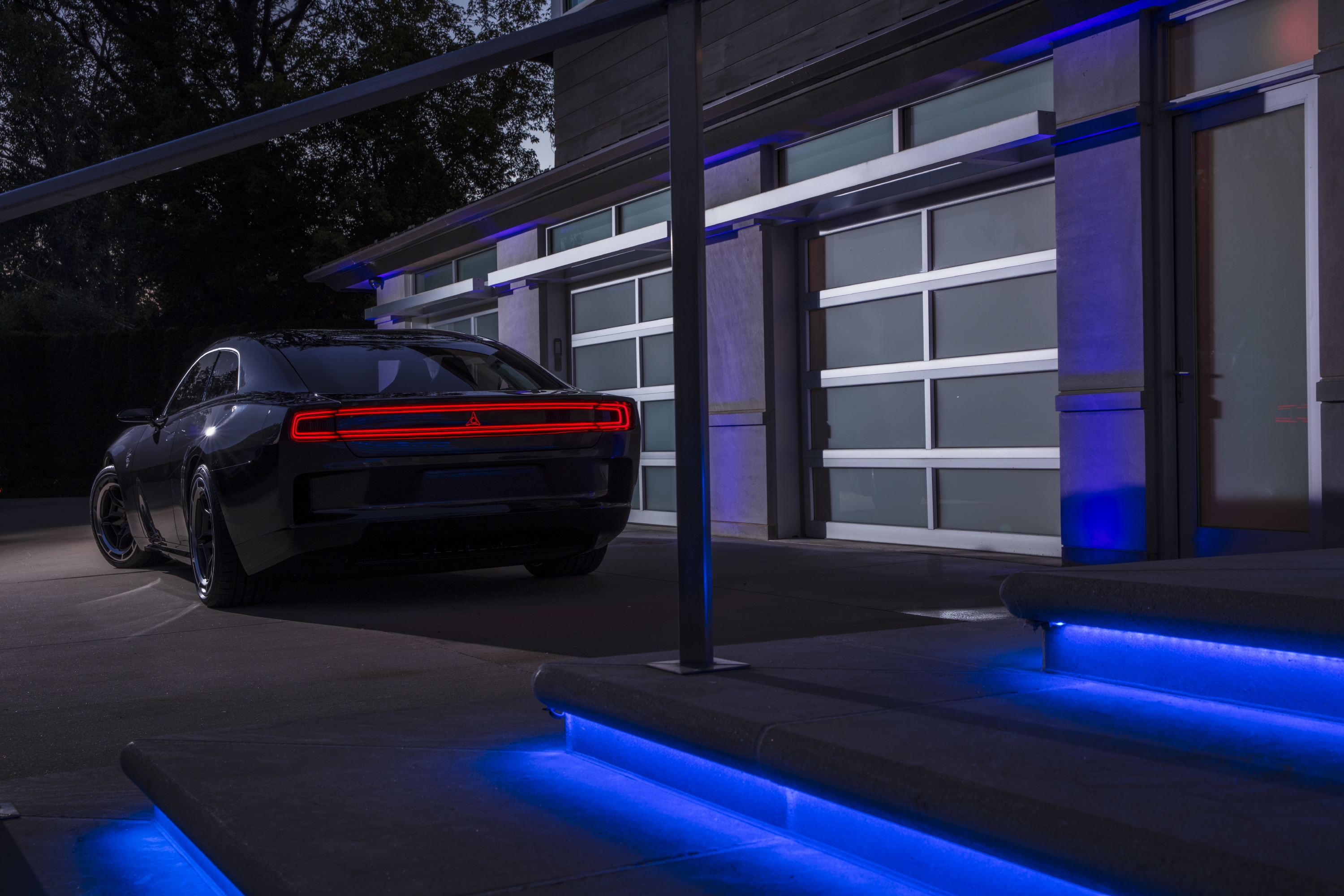
Further upgrades may be available through over-the-air updates, though Dodge intends on offering most of its upgrades through its authorised network of North American ‘Power Broker’ dealers.
Unlike Dodge’s traditional front-engine, rear-drive performance cars, the Charger Daytona SRT Banshee leverages an all-wheel drive system with varying drive modes – auto, sport, track and drag.
The concept car, rolling on 21-inch wheels, is built on Stellantis’s STLA Large platform which, in other cases, can offer over 800km of range.
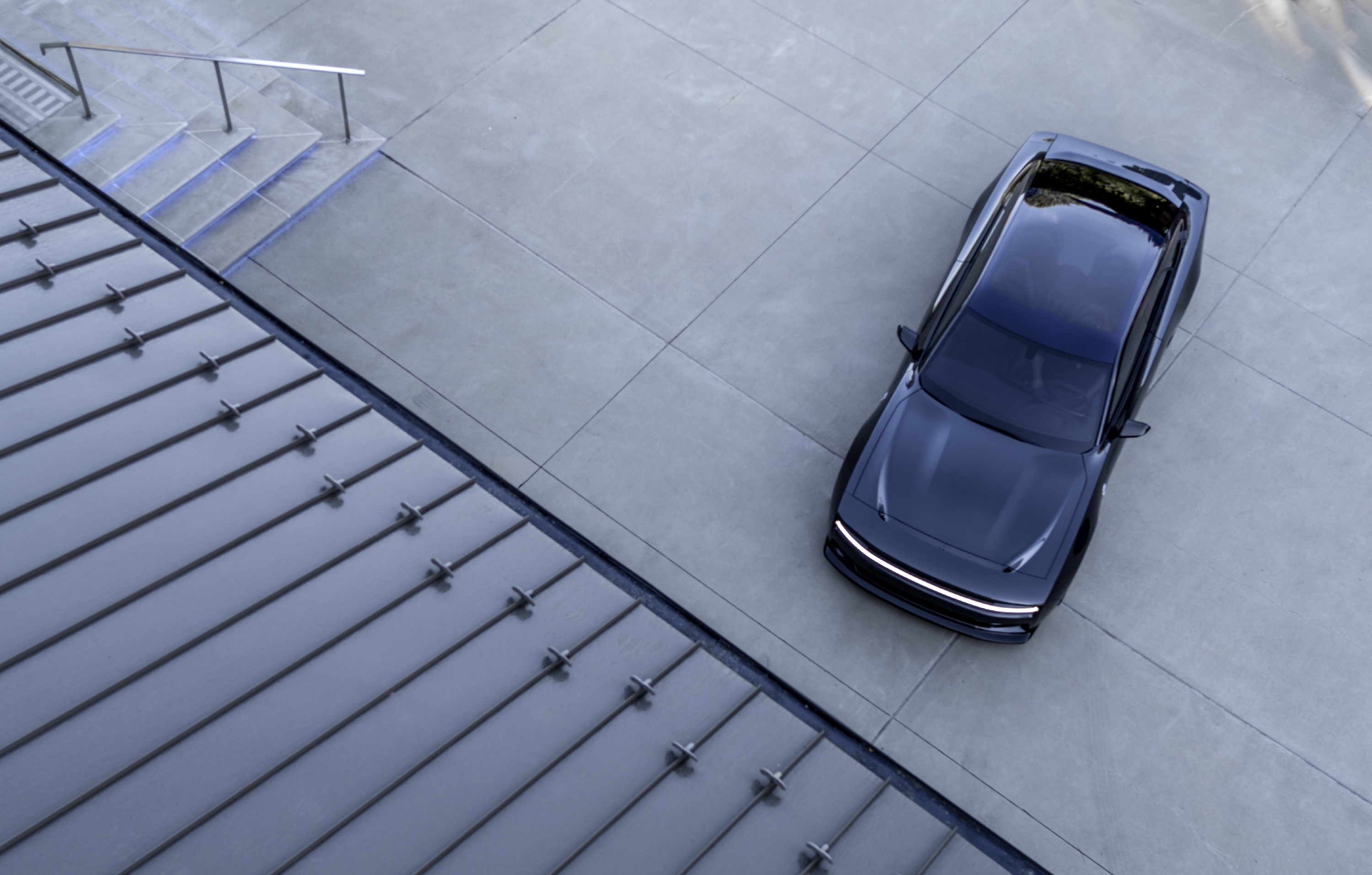
Kuniskis, however, isn’t wedded to those figures. Speaking to The Detroit News, Kuniskis said: “please don’t try to tie that back, because the things we do on this car are not range-enablers. The front end, the transmission, the sound system, they’re not range enablers”.
He continues, “I’m not going to worry about the actual number [driving range]… If you look at the Hellcat today, the Hellcat Redeye has [273 kilometres].
“Sure, you can pull over, fill it up with gas, but the range is not a purchase reason for that customer. As long as I have a competitive range, I’m fine. You’re never going to hear me bragging, ‘I’ve got the best range.’”
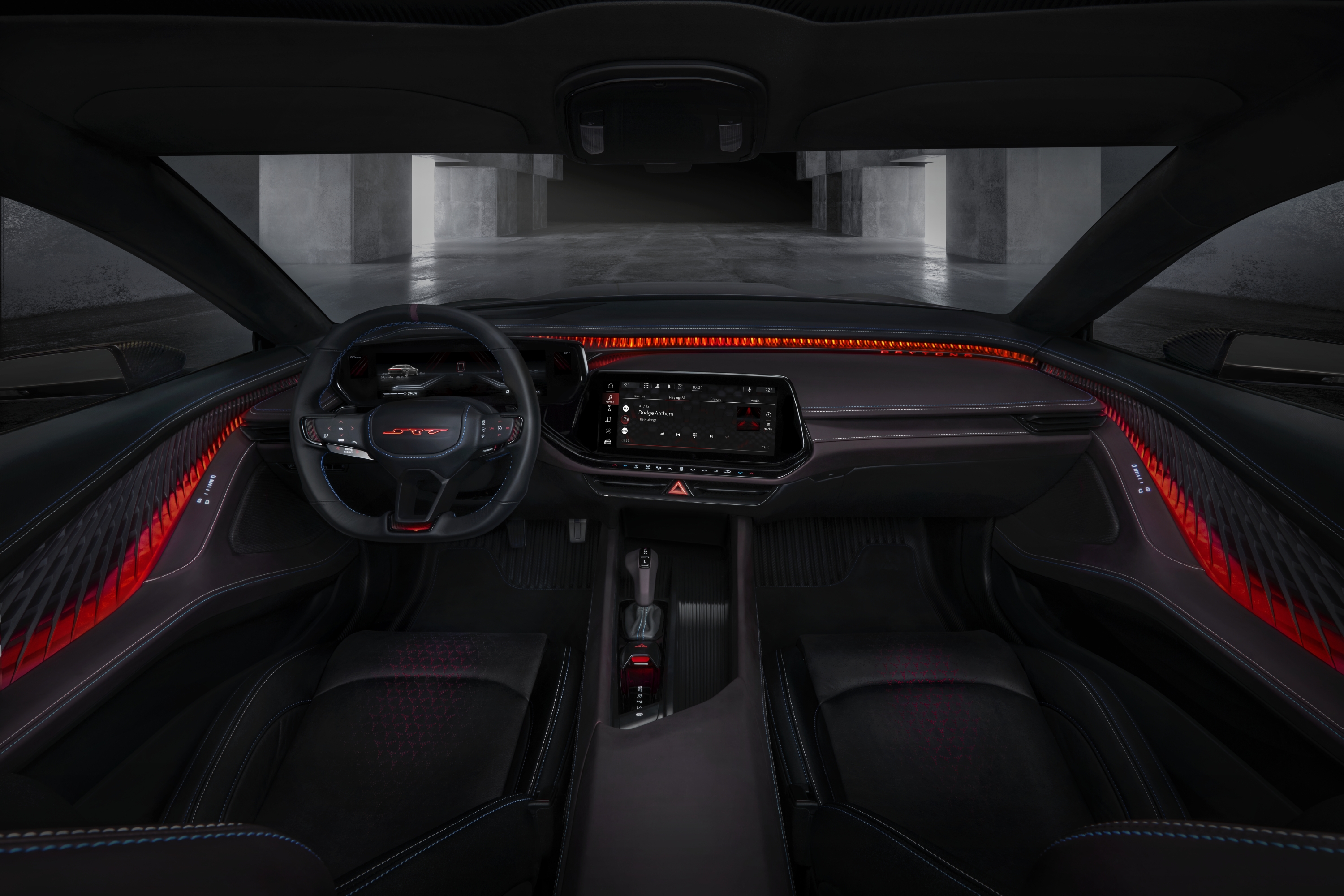
Inside the cabin, occupants are treated to an open, airy glasshouse fitted with a 12.3-inch centre screen, a 16-inch digital instrument cluster plus an eight by three inch heads-up display. A throwback pistol-grip shifter is a neat nod to the past, and the rear seats can fold flat for extra storage space.
It remains unclear where Dodge will produce its forthcoming production EV muscle car, expected to launch in 2024. Current combustion Challengers and Chargers are assembled in Brampton, Ontario Canada, which is expected to be retooled for electric platform production in 2024 – however it’s understood the plant will only be operational for manufacturing come 2025.
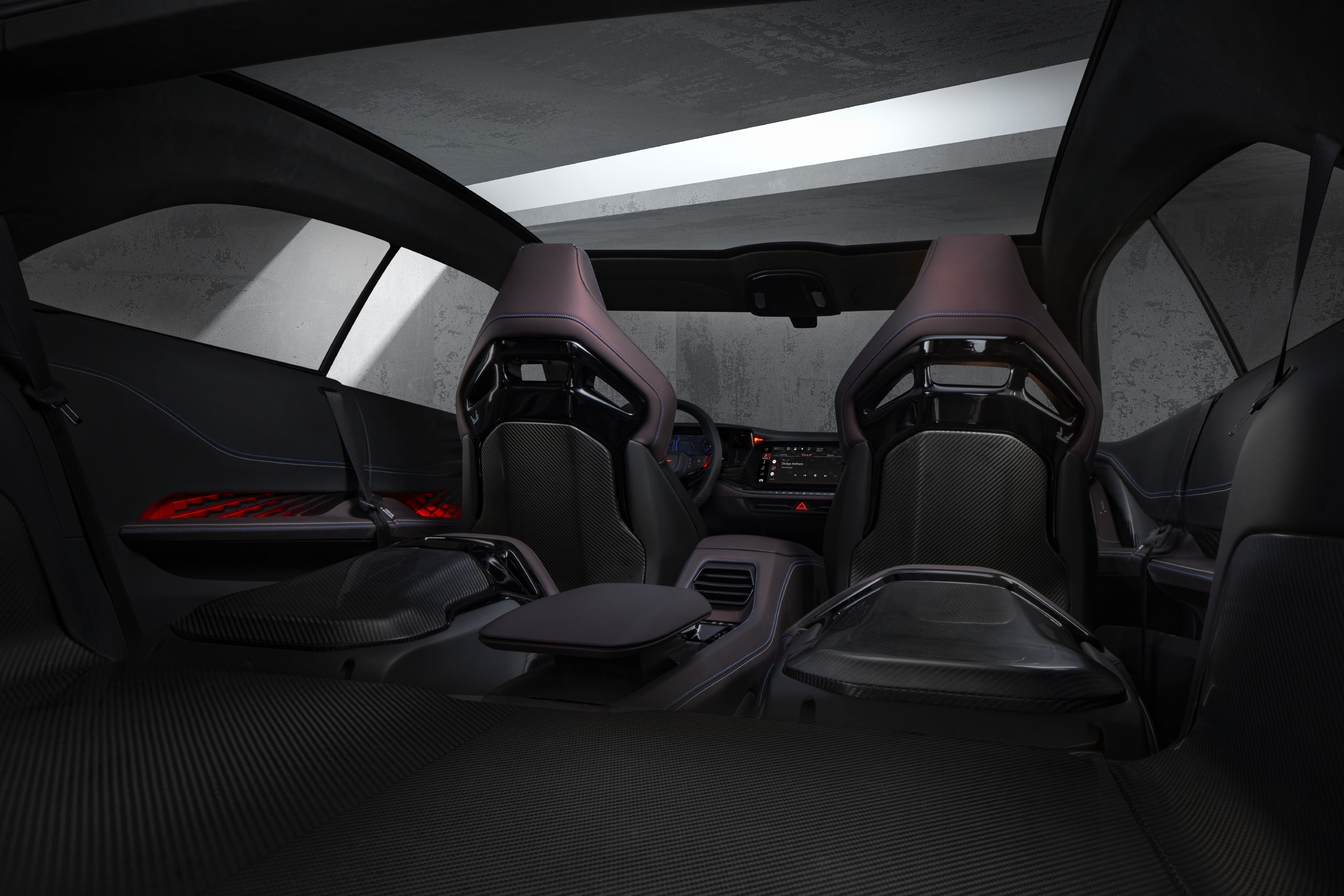
Regardless, the Charger Daytona SRT Banshee is a clear statement of intent for Dodge’s electric future.
When quizzed on this whether this particular concept will lead to a production-ready offering, Kuniskis’ answer was blunt.
“This is not a science project”.
Oh Dodge, never change.


